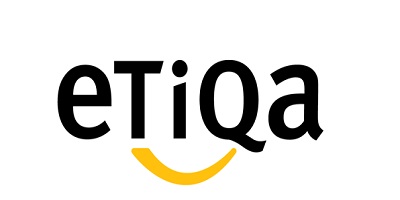Plan your sustainable investment via Managed Funds Build a sleep easy investment portfolio with free advice given by experts. Have…









Investment-linked Insurance Plans (ILP) provides you with the opportunity to leverage the gains in the financial markets and provide life insurance coverage to take care of your loved ones. In this article, we present some investment-linked plans or “101 Wrapper” that may help you meet your investment and savings objectives.
However, before we begin, we would like to address the social stigma of ILPs in general.
This is not a recommendation, Moneyline.SG is not an Exempt Financial Adviser and act only as an information portal. Please seek advice from a licensed financial advisor or leave your contact details below for a proper fact find by a licensed practitioner before making any decision. All information provided are public and can be found directly on the providers website or via any financial representatives that represents the product provider.
There is no straight forward answer to this because Investment-Linked Plans by itself is a category of life insurance products. By implying ILP is bad, is similar to saying “universal life insurance is bad”, or “whole life insurance is a scam”, or “buying term life insurance is a waste of money”
The notion of ILP came about when people were unhappy with par fund returns of life insurance policies and wanted more flexibility and control. Therefore, Insurance companies decide to give people more flexibility. The biggest problem with ILP is that the cost of insurance rises steeply in the later years of the insured’s life. Thus, if the cost of insurance continuously supersedes the returns of the underlying investments each year, the cash value may actually deplete to a stage where one may eventually lose their coverage even as they continue to pay their premium diligently.
More recently, we are starting to see the emergence of a different type of ILP which is primarily marketed as an investment product by agents, bankers and financial advisors. They are typically known as the “101 wrapper”; such plans provide a death coverage of 101% of the total premiums paid, or in other words, not much insurance coverage. Technically, such a plan does not entirely mix investments with insurance but provides a value-added preposition of capital guaranteed upon the insured’s death regardless if the price of the investments drops below the principal.
This feature can be one of the most fundamental reasons for considering an Investment Linked Policy (ILP). While an individual is alive, they can effectively manage their investments. However, when a person passes away suddenly, there is a risk of inheriting a struggling portfolio by family members who may rely on these investments for important purposes such as children’s education, retirement, or future family expenses.
Therefore, one of the key benefits of this product is the inclusion of death coverage. This means that in the unfortunate event of your demise, the principal amount will be guaranteed to your beneficiaries. Unlike investing through traditional means, an ILP ensures that your investment is protected even after your death, providing financial security for your loved ones.”
Please note that ILPs may have varying features and conditions, so it’s essential to review the specific terms and conditions of the policy you are considering.
This may come as a surprise, as investment-linked insurance products are often criticized for high platform charges, in addition to fund management and insurance fees. However, this article highlights plans that are cost efficient (low breakeven yield), with the inclusion of start-up and loyalty bonuses to offset costs. These plans may prove to be more cost-effective than a pure investment or robo-advisory platform over a certain holding period.
One must take note that such plans requires a part of your investments, usually termed as “Initial Unit Allocation” to be locked up for a selected number of years. These monies cannot be withdrawn unless you wish to surrender or terminate the policy.

Account Maintenance Fee – 2.1% p.a. first 10 years 0.6% p.a. 11th year onwards
Charges exclude fund management fees, and early surrender fees and other partial withdrawal fees.
The HSBC Wealth Abundance is a new addition to the suite of HSBC Life Investment Linked Policies. If you are looking to grow your wealth through investments to confidently meet your financial goals while protecting yourself and your loved ones, HSBC Wealth Abundance comprehensive range of benefits allows you to optimize your investment returns, create additional income streams, and enjoy peace of mind with extensive life protection coverage.

Policy Charges – 2.3% p.a. (deducted monthly as long as policy is inforced)
Charges exclude fund management fees, cost of insurance, and early surrender fees and other partial withdrawal fees.
The Etiqa Investbuilder offers a Minimum Investment Period (MIP) of 3, 5, or 10-20 years. During the MIP, the policy must be continuously paid and in effect. The plan does offer a premium holiday option for up to 12 months or waives the early encashment charge in the event of hospitalization, critical illness, retrenchment, or total permanent disability (TPD). Dividends will be paid out if dividend-paying funds are selected as part of the portfolio and the policyholder has chosen to receive dividends.
The Etiqa ILP sets itself apart with its straightforward charging program. The product maintains a consistent charge of 2.3% p.a. until policy surrender, but the impact of these charges is offset by an upfront welcome bonus and a loyalty bonus of 2.0% p.a. starting from the 11th policy year. As a result, the effective charges decrease significantly to as low as 0.3% p.a. from the 11th year onward. This structure ensures transparency and offers policyholders the benefit of reduced charges over time, making it an attractive option for short and long-term investments into AI Funds such as Fundsmith.
Investing in Etiqa Investbuilder can also be done even if you’re not a Singapore Residents or are located overseas at the point of application, this feature is available to selected countries resident and nationality, for more on this feel free to make enquiry below to see if you’re eligible
What we don’t like

Initial Charge – 0.35% – 0.85% p.a. x Initial Account Value x Number of Policy Term (this is charged on the first 24 months of the initial account market value)
Policy Charge – 1.2% x Annualised Commited Regular Premium x Number of Policy Term
Charges exclude fund management fees, cost of insurance, and early surrender fees and other partial withdrawal fees.
In today’s uncertain global climate, it can be challenging to know how to invest your money when your own job may be at risk. The saying “buy the dip” is not a matter of whether, but a matter of how, especially when the likelihood of unexpected financial setbacks increases during economic turmoil.
One solution to this problem may be TM #goAffluence. Have you ever thought about how to continue investing when the market is down and you lose your job due to retrenchment?
TM #goAffluence and FWD Invest First Plus share similarities in their charging structure, as they were the first two to introduce the Annualised Committed Regular Premium (ACRP) approach. However, the key difference lies in the initial policy charge. TM charges based on the value of the Initial Unit Account, which includes the first 24-month contributions, whereas FWD charges based on the Annualised Committed Regular Premium for both the initial and policy charges. Consequently, in an up market, TM policies will incur higher charges, while during a down market, TM policies will experience lower overall charges. This variation in charging mechanism allows for different cost implications depending on the market conditions, providing policyholders with a unique perspective when considering their investment strategy.
What we like
What we don’t like
Based on our analysis, if you prioritize low charges and are comfortable with a less flexible investment strategy, Etiqa Invest Builder may be the most suitable option. On the other hand, if you have a longer investment horizon and value high flexibility and upfront bonuses, TM #goAffluence offers better benefits. HSBC Life Wealth Abundance provides a balance between flexibility and low overall investment cost. However, it is crucial to carefully consider your long-term priorities and factors before selecting a policy, as these plans do not guarantee the principal in case of premature termination or even after the minimum commitment period. Returns are all subjected to market conditions, and it is recommended to seek clarification from agents or financial advisors regarding the associated charges before making a commitment.
Our MAS-Licensed Partner will provide you with objective advice and help you compare insurance quotes from different providers. 100% Free & No Commitment. Retrieve your info using your Singpass App or Manually fill in the forms below.
Plan your sustainable investment via Managed Funds Build a sleep easy investment portfolio with free advice given by experts. Have…
: Secure Your Golden Years with the Right Choice Introduction In the sunny island nation of Singapore, making the right choice…
Comments are closed.
7 Comments